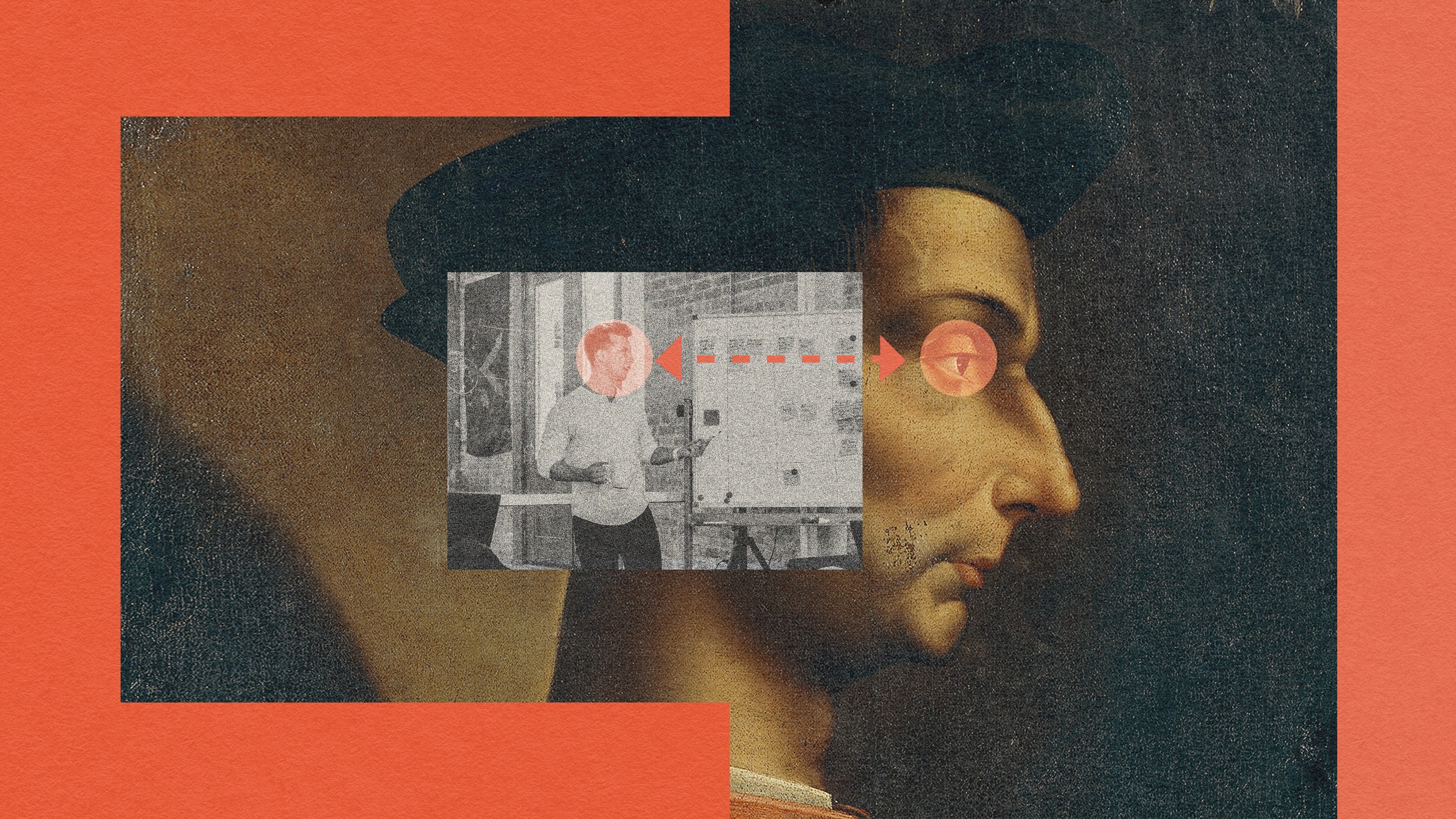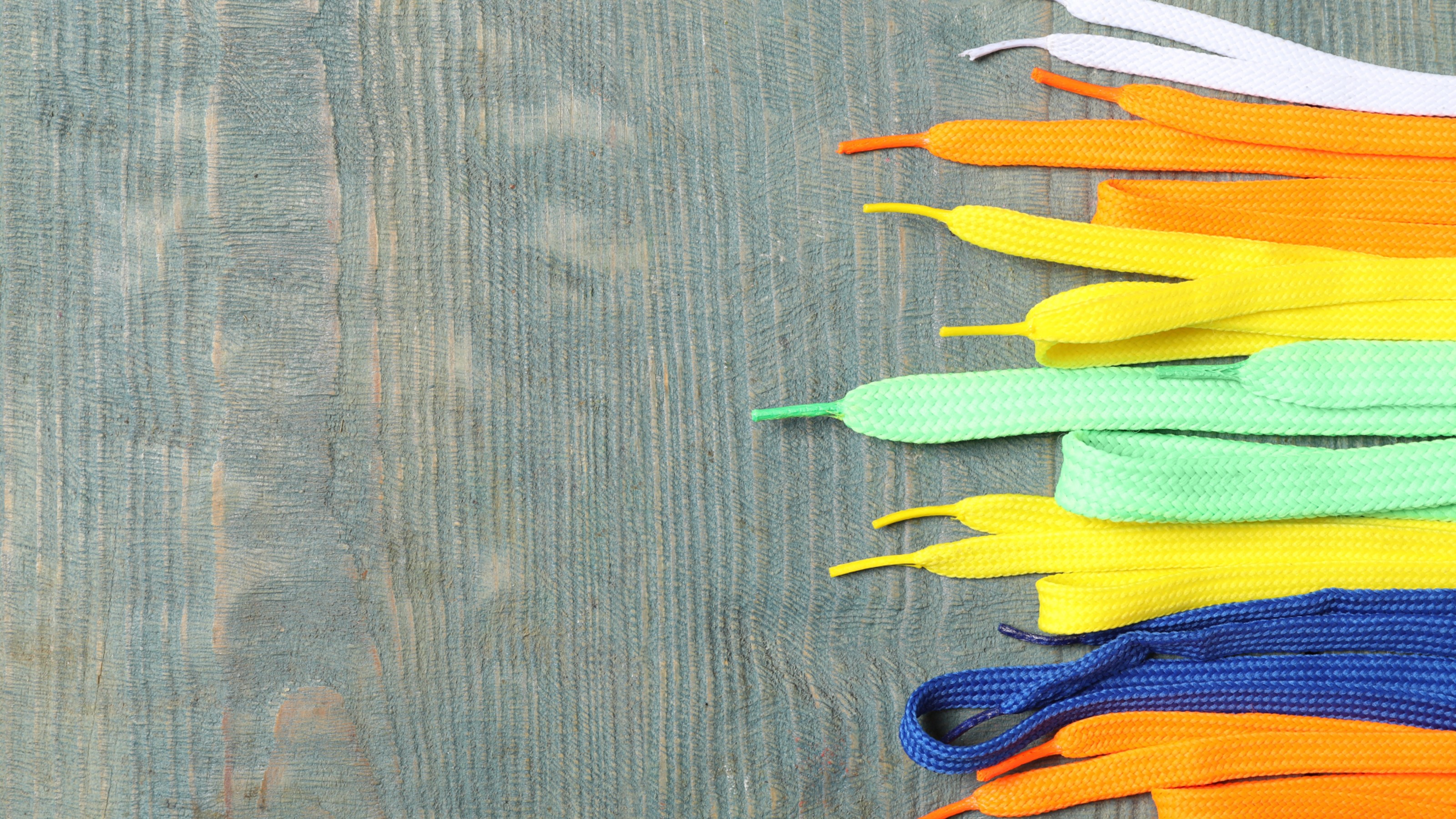Niles Elliot Goldstein is Rabbi Emeritus of The New Shul, where he served as its spiritual leader from its founding in 1999 until 2009. Prior to The New Shul, Niles[…]
Rabbi Niles Goldstein helped create a modern synagogue that’s home to all sorts of untraditional ideas.
Question: What is the New Shul and how is it different from traditional synagogues?
Rabbi Niles Goldstein: The New Shul started in 1999, and as the founding rabbi, I along with many of our founding families who are still with us looked around Manhattan and just thought that there really wasn't a synagogue out there for them that they wanted to belong to and for me that I wanted to be that really spoke to our needs, which may sound surprising in a place where there's as many Jewish residents as New York City, but there really wasn't anything out there that we felt was the right fit for either of us.
And I think what makes this interesting and maybe a little unique is, A) we have tried to follow the mantra of a great Hasidic mystic, Nahman of Bratslav, who says, "I come to show you in a way that is ancient." So if you think about the word radical the real meaning of the word radical means a return to the roots, etymologically. So what we've really tried to do over last decade or so with the New Shul is create this hybrid community where on one level some of what we do is very out-of-the-box and very edgy, particularly holiday events which sometimes feel more like gorilla fever because we take them to the streets often than a conventional synagogue experience. But other times you come and it feels like a warm, very informal, but kind of traditional experience. And so we've really tried to blend the old with the new, the innovative with the historic in the inherited. So that's "A".
I think, B) is we are not afraid of taking risks and that includes taking risks of failure. And I think too many spiritual communities are afraid of taking risks. And that's the mark of cowardice, not wisdom. I think like an entrepreneur. Most of the ones I've spoken to have failed 10 times before they get that one great success and I would say in terms of religious ritual or holiday events or any other aspect of religious life we have had great successes over the years and we've also had flocks. And I think that that's fine. So I think that's another important thing that defines the New Shul is that we're willing to take chances, and too few communities are willing to go there.
Question: What are some lessons you’ve learned along the way at the New Shul?
Rabbi Niles Goldstein: Because so many of our members come from the arts community, and that's changed little bit. Greenwich Village is where we draw our core membership, but since 9/11 Greenwich Village has changed a lot too. So it still attracts a certain kind person with a very creative sensibility, but it’s certainly not in the same place as it was in the 20s and 30s were 50s when people like Jackson Pollock were running around. So I think that one of the things we've realized is that it's very hard to put on a kind of -- and many of our members are in the theater community-- religious ritual that feels like a production and yet also feels religiously authentic. It's very tricky. And unless you have professionals who are doing it, it sometimes cannot be as effective as it might be. So I would say in the area of holidays which is where we were tend to be more theatrical is a lot of overlap between theater and religion and I think a lot of theater has its roots in religion. All you have to do is look back in ancient Greek theater and much of it; most of it is drawn from religious rituals. To see that this crossover is very old and very strong, but for example, in Chanukah, we have created over the years this kind of abstract light sculpture instead of a traditional Chanukah menorah and have gone To Washington Square Park and interwoven traditional and contemporary music and liturgy and poetry and it's been a real success for us. But again, when you try to do more full-blown kinds of religious rituals in theatrical ways you have to strike that right balance between authenticity and the kind of theatricality that I think is not just shtick but something that makes the experience multi-sensory and really powerful for people. And that's hard when you're dealing with volunteers and laypeople who are trained in this area.
Question: How is being a rabbi at the New Shul different from your previous experiences?
Rabbi Niles Goldstein: Well I don't want to get into trouble here. You know, I served a couple of years at a very large suburban congregation as the assistant rabbi and it was a very, very different experience than being the founding rabbi of the New Shul partly because I've been able to basically do whatever he wanted as the founding rabbi of a brand-new community, of course in partnership with my leadership, my lay leadership. So even that's just a very surface difference but it's a very important one and I feel like the shackles were removed from me and I could be free to be the kind of rabbi I wanted to be and help create the kind of community that we all wanted.
I think when I was working as an assistant rabbi at a large suburban synagogue, I went into work with a jacket and tie every day, which is not who I am, but I felt that that was the culture of that community and I had to do that. I was very first rabbi in that particular community to wear a kippah, a skullcap. And I don't wear one on the street just like now, but I always wear one for worship services. And I had to actually fight to have this done because that wasn't part of their culture, I came from a very classical kind of reformed Judaism that really shunned a lot of ritual.
Since then, there has been a much more renewed openness to ritual in the reform movement within Judaism. But at the New Shul I am free to do whatever I want and so I have in some ways been more informal and contemporary and I lead services and have led ritual and holiday events in jeans or in flannel shirts and sneakers, if that's what makes me comfortable; partly because that's who I am and partly because that's what makes other people more comfortable and that's what I want. On the other hand, I've worn very traditional garments that more liberal rabbis liked me almost everywhere. For example, during the days of Awe, I always wear a sort of a funky version of a kittel; it’s this white garment that to this day is worn almost exclusively by Orthodox or ultra-Orthodox men. And it's an outward expression of purity and openness, the idea of during the 10 days of repentance, we literally, well not literally, we figuratively and metaphorically stand naked and exposed before God. And as I write in the “Challenge and the Soul,” to me, whenever I put on that kittel during the days of awe it reminds me exactly of putting on the white Gi that I put on whenever I step onto the wooden floor of the dojo to engage in martial arts training. So the parallels there are pretty striking as well. The garment looks virtually identical except in martial arts training have put on a black belt in with my congregation the belt is white.
Rabbi Niles Goldstein: The New Shul started in 1999, and as the founding rabbi, I along with many of our founding families who are still with us looked around Manhattan and just thought that there really wasn't a synagogue out there for them that they wanted to belong to and for me that I wanted to be that really spoke to our needs, which may sound surprising in a place where there's as many Jewish residents as New York City, but there really wasn't anything out there that we felt was the right fit for either of us.
And I think what makes this interesting and maybe a little unique is, A) we have tried to follow the mantra of a great Hasidic mystic, Nahman of Bratslav, who says, "I come to show you in a way that is ancient." So if you think about the word radical the real meaning of the word radical means a return to the roots, etymologically. So what we've really tried to do over last decade or so with the New Shul is create this hybrid community where on one level some of what we do is very out-of-the-box and very edgy, particularly holiday events which sometimes feel more like gorilla fever because we take them to the streets often than a conventional synagogue experience. But other times you come and it feels like a warm, very informal, but kind of traditional experience. And so we've really tried to blend the old with the new, the innovative with the historic in the inherited. So that's "A".
I think, B) is we are not afraid of taking risks and that includes taking risks of failure. And I think too many spiritual communities are afraid of taking risks. And that's the mark of cowardice, not wisdom. I think like an entrepreneur. Most of the ones I've spoken to have failed 10 times before they get that one great success and I would say in terms of religious ritual or holiday events or any other aspect of religious life we have had great successes over the years and we've also had flocks. And I think that that's fine. So I think that's another important thing that defines the New Shul is that we're willing to take chances, and too few communities are willing to go there.
Question: What are some lessons you’ve learned along the way at the New Shul?
Rabbi Niles Goldstein: Because so many of our members come from the arts community, and that's changed little bit. Greenwich Village is where we draw our core membership, but since 9/11 Greenwich Village has changed a lot too. So it still attracts a certain kind person with a very creative sensibility, but it’s certainly not in the same place as it was in the 20s and 30s were 50s when people like Jackson Pollock were running around. So I think that one of the things we've realized is that it's very hard to put on a kind of -- and many of our members are in the theater community-- religious ritual that feels like a production and yet also feels religiously authentic. It's very tricky. And unless you have professionals who are doing it, it sometimes cannot be as effective as it might be. So I would say in the area of holidays which is where we were tend to be more theatrical is a lot of overlap between theater and religion and I think a lot of theater has its roots in religion. All you have to do is look back in ancient Greek theater and much of it; most of it is drawn from religious rituals. To see that this crossover is very old and very strong, but for example, in Chanukah, we have created over the years this kind of abstract light sculpture instead of a traditional Chanukah menorah and have gone To Washington Square Park and interwoven traditional and contemporary music and liturgy and poetry and it's been a real success for us. But again, when you try to do more full-blown kinds of religious rituals in theatrical ways you have to strike that right balance between authenticity and the kind of theatricality that I think is not just shtick but something that makes the experience multi-sensory and really powerful for people. And that's hard when you're dealing with volunteers and laypeople who are trained in this area.
Question: How is being a rabbi at the New Shul different from your previous experiences?
Rabbi Niles Goldstein: Well I don't want to get into trouble here. You know, I served a couple of years at a very large suburban congregation as the assistant rabbi and it was a very, very different experience than being the founding rabbi of the New Shul partly because I've been able to basically do whatever he wanted as the founding rabbi of a brand-new community, of course in partnership with my leadership, my lay leadership. So even that's just a very surface difference but it's a very important one and I feel like the shackles were removed from me and I could be free to be the kind of rabbi I wanted to be and help create the kind of community that we all wanted.
I think when I was working as an assistant rabbi at a large suburban synagogue, I went into work with a jacket and tie every day, which is not who I am, but I felt that that was the culture of that community and I had to do that. I was very first rabbi in that particular community to wear a kippah, a skullcap. And I don't wear one on the street just like now, but I always wear one for worship services. And I had to actually fight to have this done because that wasn't part of their culture, I came from a very classical kind of reformed Judaism that really shunned a lot of ritual.
Since then, there has been a much more renewed openness to ritual in the reform movement within Judaism. But at the New Shul I am free to do whatever I want and so I have in some ways been more informal and contemporary and I lead services and have led ritual and holiday events in jeans or in flannel shirts and sneakers, if that's what makes me comfortable; partly because that's who I am and partly because that's what makes other people more comfortable and that's what I want. On the other hand, I've worn very traditional garments that more liberal rabbis liked me almost everywhere. For example, during the days of Awe, I always wear a sort of a funky version of a kittel; it’s this white garment that to this day is worn almost exclusively by Orthodox or ultra-Orthodox men. And it's an outward expression of purity and openness, the idea of during the 10 days of repentance, we literally, well not literally, we figuratively and metaphorically stand naked and exposed before God. And as I write in the “Challenge and the Soul,” to me, whenever I put on that kittel during the days of awe it reminds me exactly of putting on the white Gi that I put on whenever I step onto the wooden floor of the dojo to engage in martial arts training. So the parallels there are pretty striking as well. The garment looks virtually identical except in martial arts training have put on a black belt in with my congregation the belt is white.
Recorded on March 15, 2010
▸
8 min
—
with





